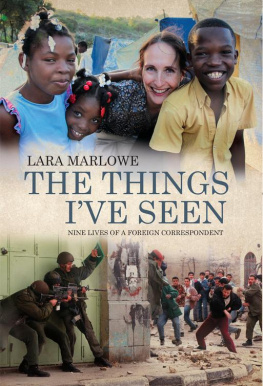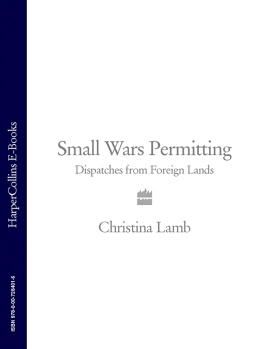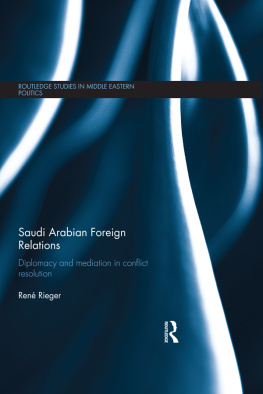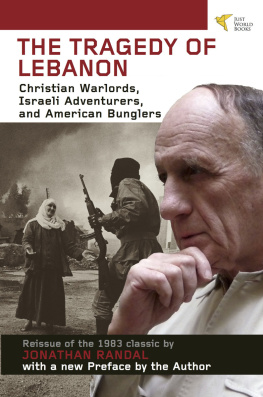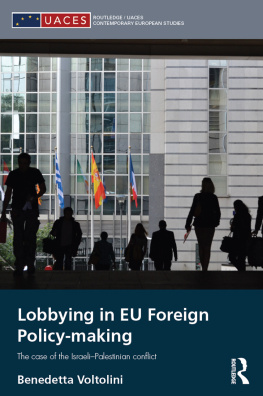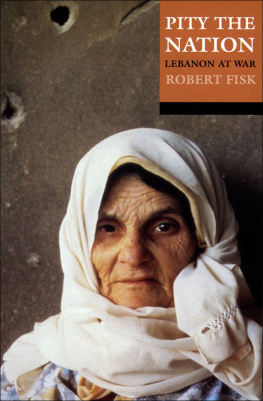Journalism is a lifelong apprenticeship. Though its usually a matter of trial and error, and especially a school of hard knocks, colleagues and editors have taught me a great deal.
I am grateful to The Irish Times for underwriting my reporting for the past fourteen years, and for giving permission for my articles to be reproduced in this book. Theres a special place in my heart for Paul Gillespie, the Irish Times retired foreign policy editor, who hired me and most of my generation of foreign correspondents.
Ive had five fine foreign editors at The Irish Times. Over the years, they have been the umbilical cord that tied me to the paper, providing moral support, guidance and a degree of freedom that few publications grant their journalists.
In January 1988, Patrick Comerford commissioned Going West in Beirut, the first article I published in The Irish Times; it is reproduced in this book.
At my request, Seamus Martin sent me to Afghanistan after the atrocities of September 11, with the blessing of then editor Conor Brady.
Also at my request, the papers current editor, Geraldine Kennedy, allowed me to cover the 2003 invasion of Iraq, and to return to the country repeatedly thereafter.
When he was foreign editor, Peter Murtagh saw me through NATOs bombardment of Serbia in 1999, the Iraq war, and Lebanon in the wake of Rafik al-Hariris assassination.
Paddy Smyth sent me to cover the Israel-Hizballah war in 2006, the Georgian war two summers later, and the aftermath of Israels January 2009 assault on the Gaza Strip.
In my present post as Washington correspondent, I have benefited from Denis Stauntons vast knowledge of the US. With his rapid, infallible news sense, Denis dispatched me to Haiti to cover the earthquake, to Louisiana for the oil spill, and to Arizona for the battle over immigration.
For my first thirteen years at The Irish Times, Paris was my bread and butter. My foreign editors, but also editors from other sections, particularly Patsey Murphy in the Weekend section, and later the Saturday Magazine, received my copy with enthusiasm.
There is a terrific sense of collegiality on The Irish Times, and Ive been encouraged and helped by secretaries, switchboard operators, copy-takers, sub-editors , computer technicians and accountants too numerous to name.
Long ago, the television producer Barry Lando gave me my first break in journalism when he hired me as a researcher-associate producer for CBS News 60 Minutes programme. Barry and I did some great stories together. On one of them, in Damascus in 1983, I met Robert Fisk, to whom I was married for twelve years. Robert was, malgr tout, the best journalism teacher.
Unless otherwise stated, all articles which appear in this collection were originally published in The Irish Times.
Preface:
A Life in Journalism
On a spring morning in 1981, I handed over a coin at the kiosk on the avenue Hoche, picked up a copy of the International Herald Tribune and turned to the back page. There was a photograph of Alain Robbe-Grillet, the father of the nouveau roman, whom I had just interviewed. I didnt know then that sub-editors , not reporters, write headlines. The title on the article was different from the one I had thought up before posting my copy to Neuilly. The bastards , I thought; they ran an article by somebody else.
Then my eyes fell to the byline, where I read, for the first time ever in a daily newspaper: by Lara Marlowe. I yelped for joy, leapt in the air and ran around in circles. My life as a journalist had started.
I wrote another article, another and another. Some were rejected. There were setbacks. Nearly three decades and several thousand articles later, I am still pleased to see my byline.
I turned thirty, then forty, then fifty. Middle age did not creep up on me; it jumped out and said boo. But two filing cabinet drawers full of articles were proof of the passage of time. They confirmed the breadth of my French experience , chronicled eight years in Beirut, recounted nearly a decade of blood letting in Algeria. From the siege of Sarajevo to NATOs punishing bombardment of Serbia, I had seen the breakup of Yugoslavia.
Without my realising it, my life fell into neat, historic segments. France and Ireland were my home base and refuge, and I often found their footprints in the regions where I travelled. But Lebanon, Algeria and Yugoslavia dominated the 1990s; Afghanistan, Iraq and the United States the first decade of the new century. I watched the Americans bomb Kabul, then Baghdad. Vietraqistan, as the American journalist Mort Rosenblum calls it, was the recurring theme of the noughties.
Much of my work was done from the safety of Paris. But without ever intending to be a war correspondent, I reported from frontlines in Central America, the Horn of Africa, the Caucasus and, especially, the Middle East and Iraq. The wars I covered, big and small, short and long, added up to some fifteen conflicts, depending how you counted.
Among the images that swarm through my mind is a narrow, monastic room in a retirement home in Bourj Hammoud, the Armenian quarter of Beirut. An icon of the Virgin hangs between two beds, in which lie a husband and wife, aged one hundred and five and ninety-seven respectively. Both are blind. They listen to Radio Yerevan in their waking hours. The old man bears a scar on one cheek, etched by a sabre at the Battle of Tannenberg, where he fought on the side of the Tsars army in 1914. The following year, when the Turks began the first genocide of the twentieth century, he made the long march to what was then Mesopotamia, and across the desert to Lebanon, where he met his wife.
Had his life been happy, I asked him. I hate my circumstances now, he said. But the things I have seen, no one has seen.
I once asked my dear friend the French academician Michel Don whether I should write fiction or non-fiction. Anyone can write a novel, Michel replied. You have seen things no one else has.
Writing novels remains the mirage that tantalises one through the slog of daily journalism. Yet I have loved this profession as one loves a place or a person . No adventure matches that paring down of belongings to a single suitcase and heading for the airport. Journalism, I realise now, has given me a far more pungent taste of life than any ivory tower.
Indeed, journalism has given me many lives. Each time I have moved on to a different country or conflict, the world has seemed new. And every time I have escaped a close call, Ive wondered whether, like the cats who have been my companions, I am exhausting my nine lives.
In my reporting, I strive for authenticity: to freeze the fleetingness of time, to preserve people and situations in all their intensity. It is a paradox, for ours is a transient medium. As a French colleague liked to remind me, newspapers are meant to wrap fish the next day.
Like the proverbial fisherman, some of my best stories got away. I searched fruitlessly through archives and old diskettes for three articles that fell victim to last minute confusion, rivalry among editors, and the dictates of political correctness at TIME Magazine, which employed me for eight years.
I loved the story of the Kuwaiti newspaper editor Faisal al-Marzouk, because it had a happy ending. On the day Iraqi forces fled Kuwait City in February 1991, a wealthy woman pleaded with me to find her brother, who had been taken to Basra by the Iraqis, along with hundreds of Kuwaiti civilians . Eventually, in the middle of a cold night on the IraqKuwait frontier, I stuck my head into a dozen coaches filled with newly released prisoners. In each one I shouted: Is Faisal al-Marzouk here?

